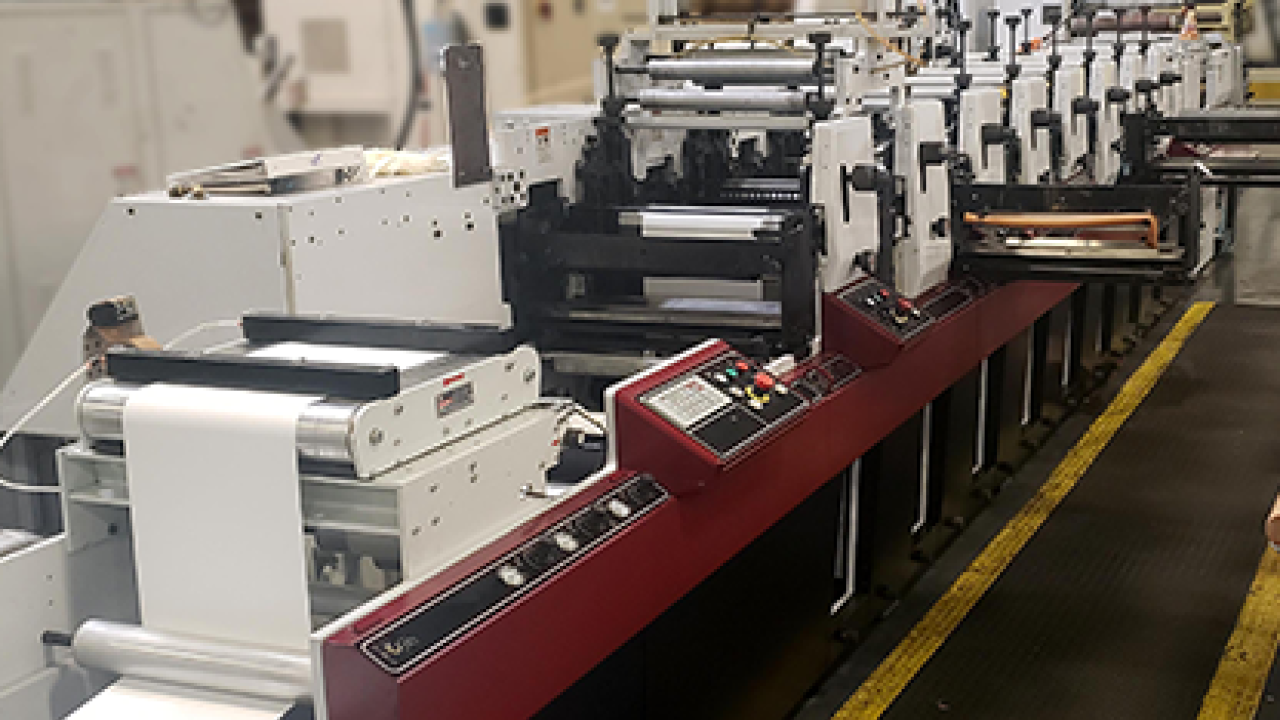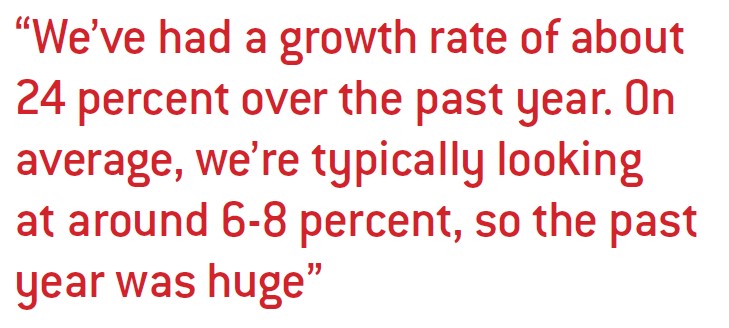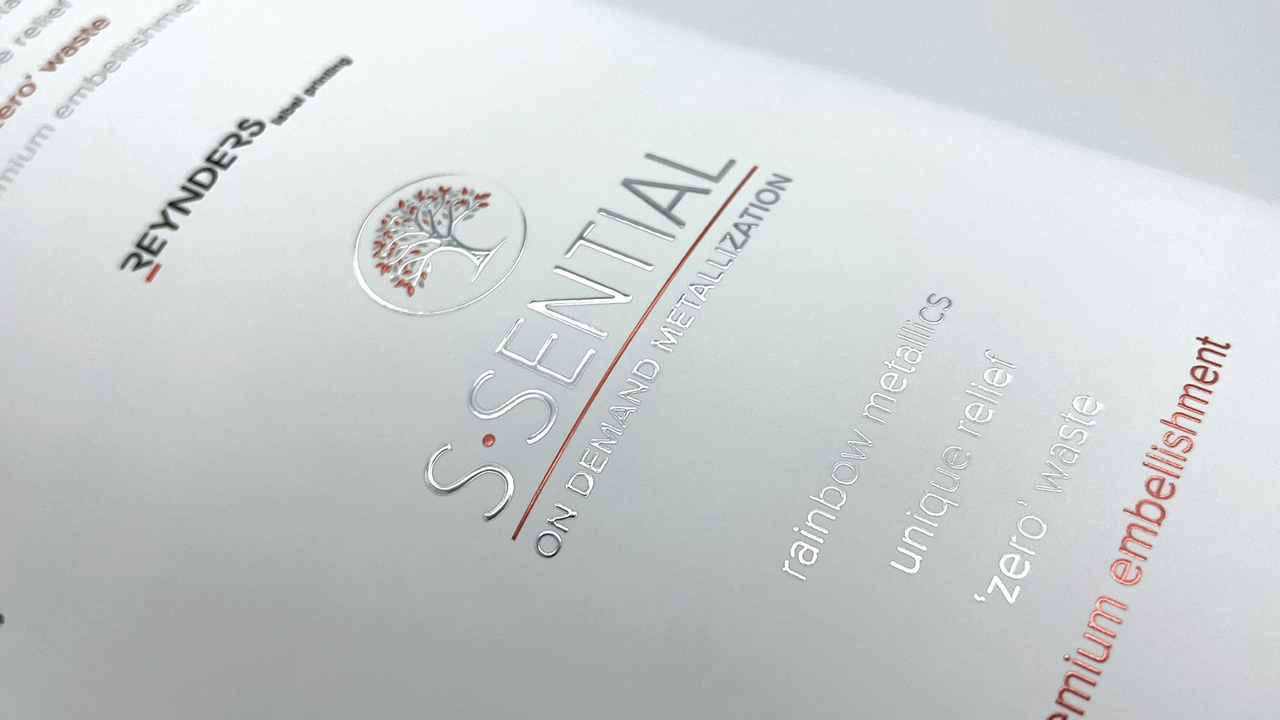DLS finds success in blank labels

‘We’ve had a growth rate of about 24 percent over the past year,’ reports James Cirigliano, vice president of marketing at DLS. ‘On average, we’re typically looking at around a 6-8 percent year-over-year growth rate, so the past year was huge.’
Because of this high growth rate, DLS has made a significant investment in equipment across its manufacturing and warehousing facilities in the United States.
At its headquarters in Itasca, Illinois, the company has installed a 4-color 17in Mark Andy 2200XL and a 2-color 17in Mark Andy 2200XL, with Martin Automatic roll splicers and AB Graphic turrets installed on both. In Duluth, Georgia, an 8-color 17in Mark Andy LP300 press has been installed. At Arlington, Texas, a 1-color, 21.5in Mark Andy 4150 press has been added. And in Reno, Nevada, the company has brought in a 2-color 17in Mark Andy 2200 press.
DLS says it chose to install Mark Andy presses across the board due to the reliability of the machinery – the company is still using presses it purchased some 25 years ago. But it’s also to ensure that the converter has extra capacity across its factories. It wants to remain local for its customers and offer the exact capabilities no matter where in the country someone is located.
The multiple presses are just one portion of the investments by DLS. Others include forklifts, scanners, compressors, tabletop rewinders, anilox roll cleaners, and expanded shelving for its warehouses to store materials.
And though this spending spree is much higher than what DLS would typically make in a year, it’s not wholly out of its typical modus operandi.

‘We’ve always looked for places we can upgrade, make things easier, or increase efficiencies across the board,’ says Cirigliano. ‘But we’ve been on kind of a spending spree lately, buying new equipment and making sure that we’re covered on materials. It’s mostly just to keep up with all the work that’s been coming in.’
According to the company, the work has been coming in partly from existing customers, who are purchasing well ahead of time to compensate for the extended lead-times experienced throughout the label industry due to ongoing supply chain issues. And it’s also from an influx of new customers, which Cirigliano says has been so large that ‘we’re actually starting to dial back the number of new customers we’re taking in, because we want to be able to take care of the customers we have right now’.
Though the growth has been seen across the converter’s range of end-user markets, there has been one area where revenue has grown more than any other: blank labels.
‘Right now, blank labels are driving a large part of the increased revenue we’ve been seeing,’ reveals Cirigliano. ‘Over the past year, people have been ordering more things from home which means more shipping labels. So, it makes sense that this is where we’re seeing the most growth.’
To put the growth into perspective, the company’s revenue hit around 89 million USD this past year, where just ten years ago it was at 34 million USD. The goal, according to DLS, is to make it to 100 million USD – a target it is confident of hitting.
Growing pains
There are necessary steps a company needs to take in order to successfully expand. Ensuring a company has the necessary capabilities within its current equipment portfolio is just one step, another is making sure it has the staff to run said machines.
DLS has grown its staff over the past few years from 130 to upwards of 200. However, as the company experiences more growth and expansion, it’s struggling – like many other converters – to find skilled operators to work on the new presses.
‘One of the biggest problems we have is finding new employees. Finding people to work has just been difficult,’ says Cirigliano. ‘We’ve placed job postings, gone to job fairs, we’ve put out advertisements – basically anything you can think of, but it’s been a challenge.’
As a unique position, a skilled press operator is not the easiest job to fill. Many press operators are already employed and the number who are looking for work is relatively small. This exact problem is a common occurrence throughout the industry, and the clear-cut answer to it is nowhere to be seen.
However, DLS has seemingly found a solution within the company itself. ‘What we have been doing is bring people up. We promote a lot from within,’ says Cirigliano. ‘Often, we’ll have a press helper and after a few years if we think they’re ambitious enough and have the skillset to operate a press, we’ll train them up to work the press on their own.’
Stay up to date
Subscribe to the free Label News newsletter and receive the latest content every week. We'll never share your email address.


